Are you experiencing the frustration of an "Updating Failed" error on your WordPress site? Don't let this obstacle affect your website's functionality and accessibility. If you're seeking solutions to resolve this common issue while editing pages or posts, you've come to the right place.
This article is tailored to guide you through fixing and updating failed errors step by step efficiently, providing simple solutions for beginners, and ensuring your WordPress site stays up-to-date without complications.
Let's address this challenge together and eliminate the hurdles of publishing and updating failed error messages in WordPress.
Method 1: Steps to Fix WordPress Updating Failed Error by SSL
SSL misconfigurations, particularly issues stemming from HTTP to HTTPS transitions, are a primary cause.
We will discuss a 6-step solution with detailed screenshots to address this SSL-related challenge leading to the "Updating Failed" error.
Step1: Identify the Issue with SSL (HTTPS)
Let's examine the occurrence of the 'Updating Failed' error in WordPress. Begin by accessing your WordPress site's dashboard.
Navigate to 'Posts,' click on 'All Posts,' and proceed to the WordPress editor of the post you wish to update.

Proceed to the upper-right corner of the page, locating the 'Update' button. Click on it after making any required changes to your blog post.

Upon clicking the 'Update' button, you'll encounter an error notification in red, signaling 'Updating Failed.'
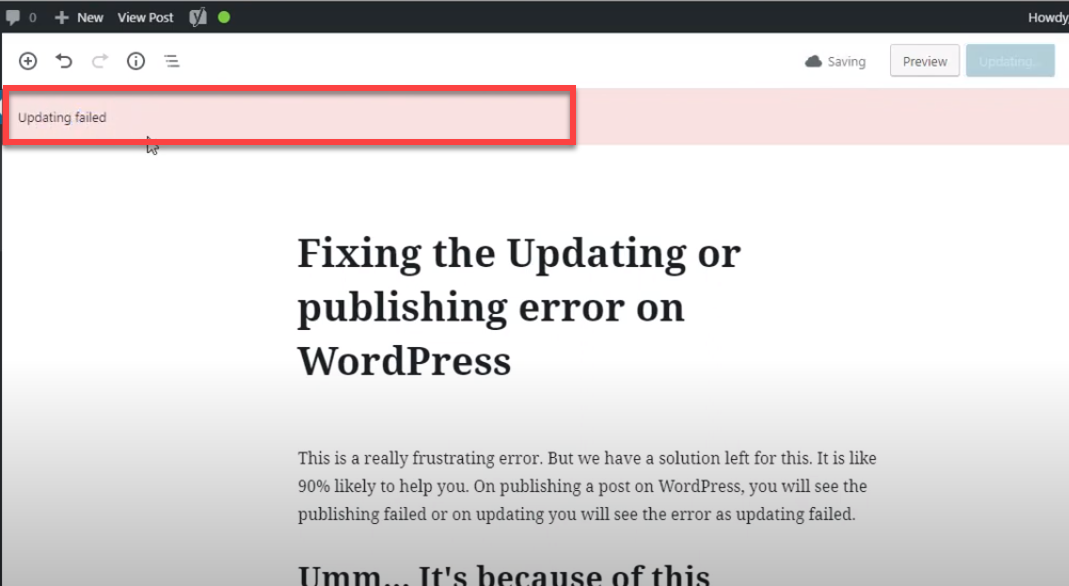
To address this issue, access the WordPress dashboard. Direct yourself to the 'Settings' section under 'General' and click on it.
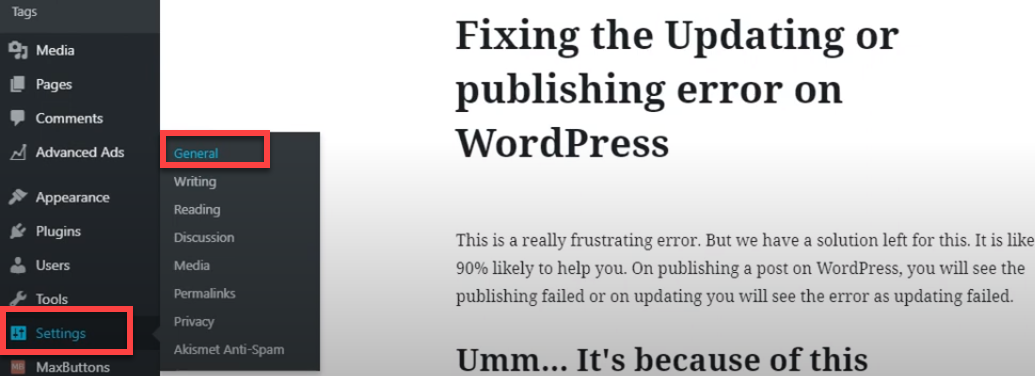
Cause : Ensure that both the WordPress Address (URL) and the Site Address (URL) utilize HTTPS. If they are configured with HTTP, it could be the root cause of the problem.
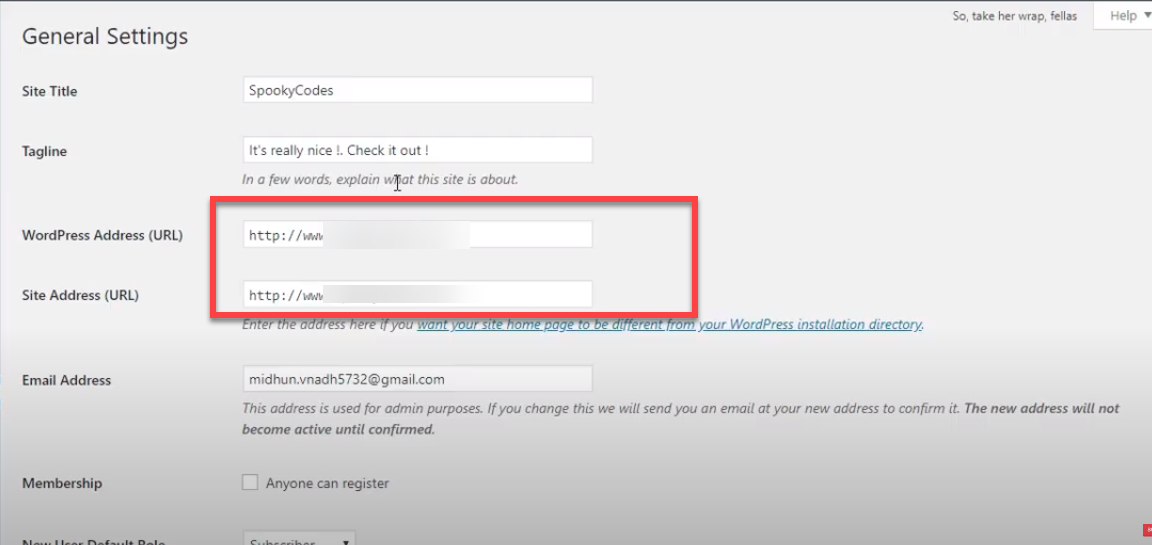
Step 2: Update SSL and HTTPS Settings
Eliminate 'https' from the URL and site address fields. Leaving the 'WordPress Address (URL)' and 'Site Address (URL)' blank may resolve the SSL issue."
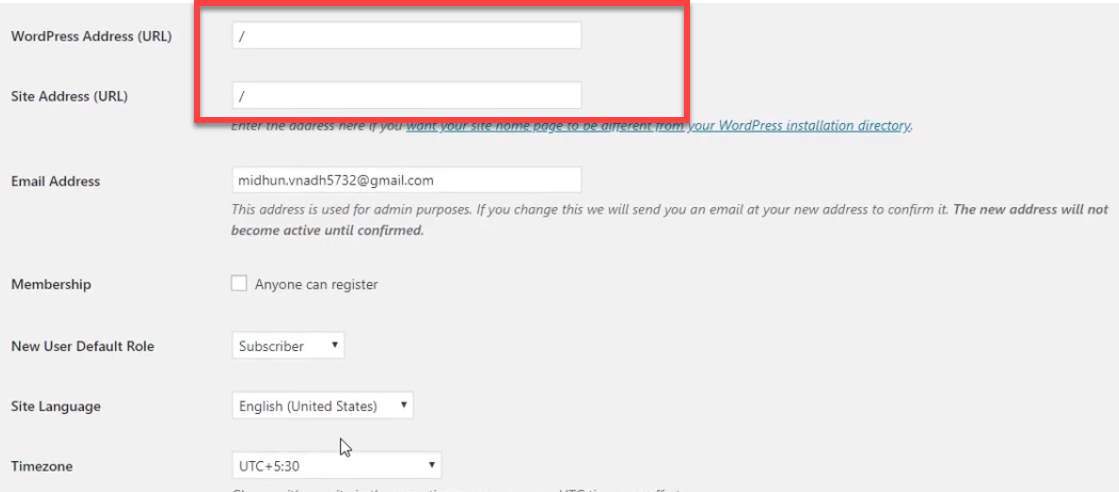
Subsequently, attempt to save changes, though it won't be successful. Introduce the backslash '/' in the respective section and attempt to save again. Verify if the problem persists.

Step 3: Adjust the WordPress Address (URL) in the Database
Access the hosting service provider if leaving the fields blank doesn't work.

Click on the “Manage Website” option when you logged in to your hosting cpanel.

Use the hosting service's tools to navigate to the database manager. Click on 'Tools' in the left sidebar of the Cpanel page, and from the dropdown menu, select 'Database.’
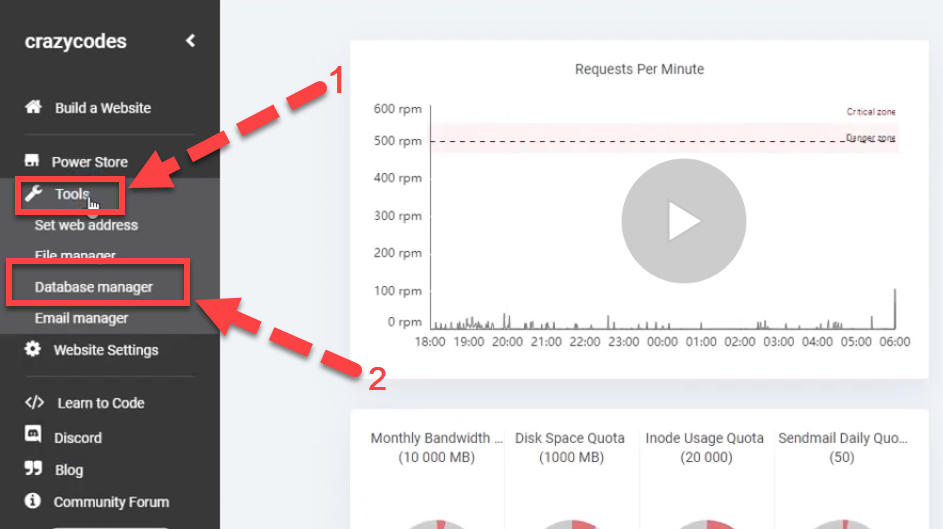
Access PHPMyAdmin to manage the WordPress database.

Navigate to the sidebar and select the 'admin wp' file located below phpMyAdmin. Clicking on it will open files associated with the SSL configuration of your website, providing access to pertinent settings.

Step 4: Modify the WP Options or Options Table:
Locate the WP options (or underscore options) table and proceed to open it. If you cannot find the WP options, don't worry.
Simply click on the underscore options, where you can address and resolve this particular issue.
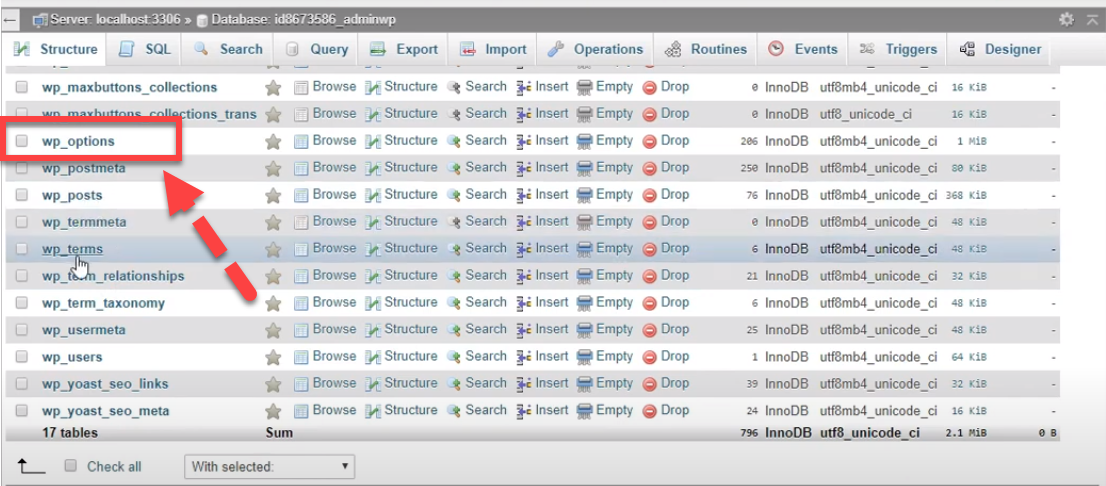
Find the entry where the WordPress Address (URL) is stored.

Change the value to a forward slash ("/").
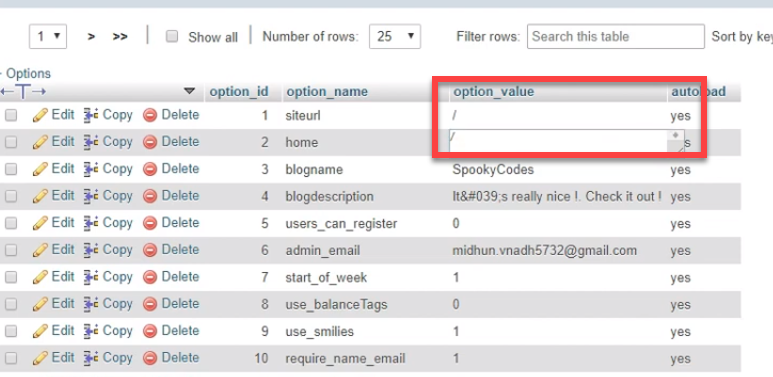
Click anywhere else to save the changes.

Step 5: Verify the Fix
Reload the WordPress site to check if it's working correctly.
Log in to the WordPress admin dashboard.
Navigate to the "Settings" section under "General" and confirm that the WordPress Address (URL) has been updated to use HTTPS.

Step 6: Check Post Updating
Select 'All Posts' from the 'Posts' menu. Access the post editor and initiate the process of updating a post by clicking on it.

Click on the Update button when you have made necessary changes.
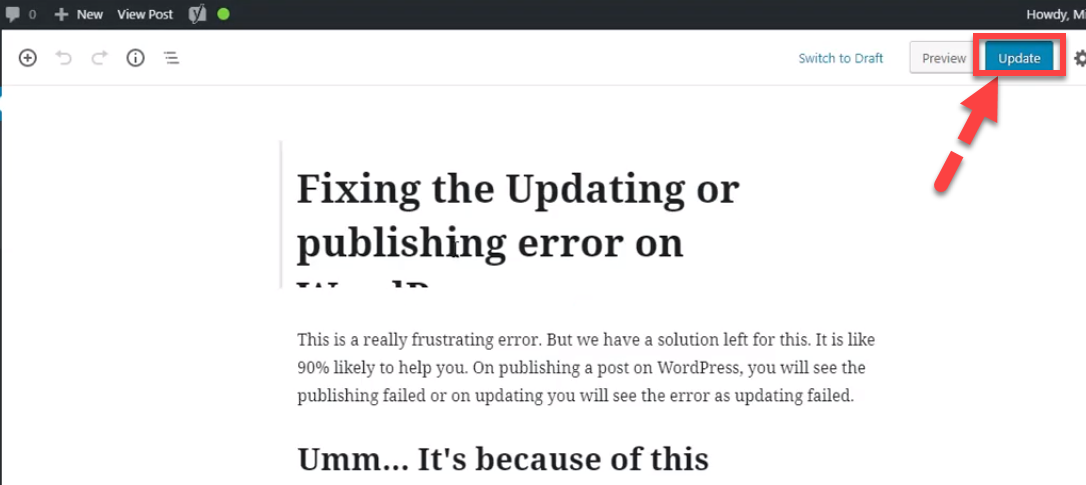
Verify the resolution of the 'updating failed' error. After clicking the update button, confirm the presence of the post updated .
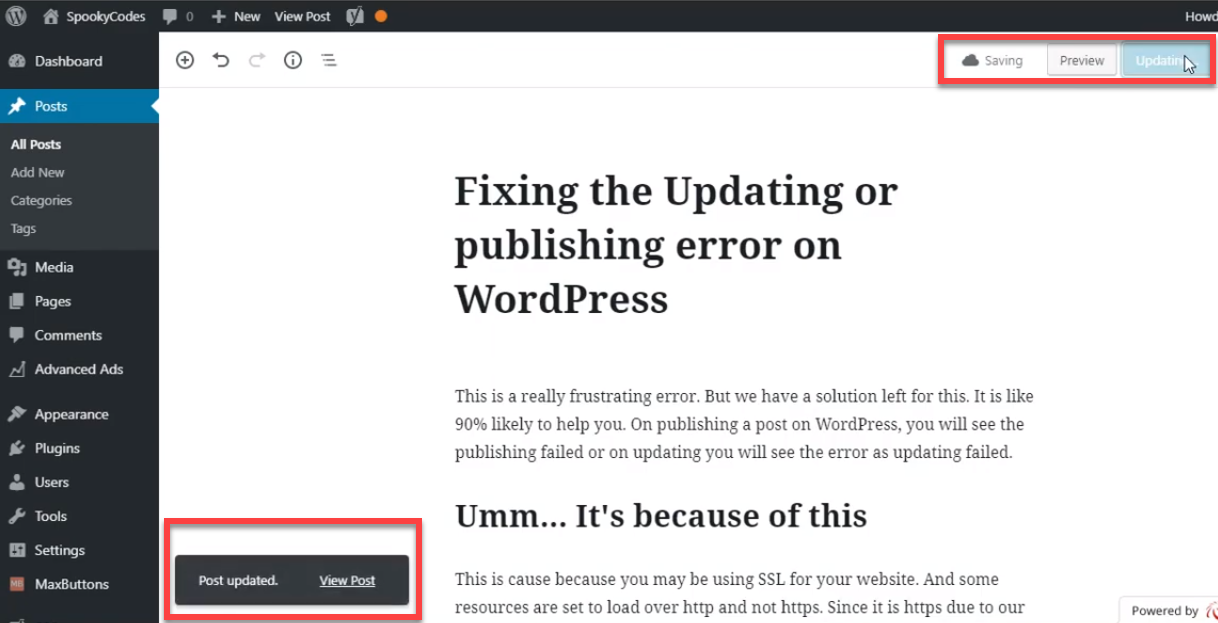
If the posts are successfully updated, the issue has been resolved. When none of the above solutions prove effective, seeking support becomes necessary. Initiate the process by reaching out to your hosting provider directly.
They possess access to server logs and additional diagnostic tools, enabling them to investigate and address potential server misconfigurations or glitches that may be causing the error."
Method 2: Steps to Fix WordPress Updating Failed Error by REST API
Step 1: Determine Whether the REST API Is Being Blocked
A common trigger for the notorious "Updating Failed" error is that WordPress cannot access the REST API to save content changes. The root causes can vary, but a logical first step is checking if the API is blocked.
Leverage the Site Health utility under Tools to identify misconfigurations.
The status tab may showcase warnings like "The REST API encountered an unexpected result" and is unable to facilitate communication between the front and back end.
Specific debugging details also surface, indicating what is interfering with typical REST API flows. Some examples include 401 authorization errors, operations timing out, invalid nonces, or other messages.
Before resorting to destructive measures like disabling plugins or tweaking server rules, review the particular error callouts. Perhaps the censorship originates from an overeager firewall plugin needing adjusted permissions. Or maybe the saved API endpoint information requires a simple reset.
Approach each troubleshooting path systematically before acting rashly. Transparent errors lead to precise resolutions. If the source remains unclear, enable debug logging to help narrow down the true blockade, keeping your WordPress site from publishing smoothly.
Step 2: Re-Enable the REST API by Resolving the Specified Error
The “Site Health” utility may provide clues into what is blocking the REST API and how to reactivate it. Look for actionable solutions.
For example, overprotective firewall tools like Cloudflare could be intercepting valid requests. Check “Settings” to whitelist the API. Alternatively, isolate if an optimization or security plugin incorrectly puts communications in a chokehold.

In other cases, WordPress lacks proper authentication with the REST API itself. Confirm your site identifies itself appropriately by inserting a few .htaccess tweaks to open access.
Those running WordPress on temperamental Windows servers may need to take measures like editing the web.config to realign configurations as well.
Trial and error helps pinpoint the true culprit. Temporarily toggle plugins off while monitoring publishing functionality after each adjustment. And tweak firewall app policies to permit the REST API.
With some targeted troubleshooting focused on plugins and firewall tools that commonly cause issues, you can reactivate the REST API and watch your publishing failed errors disappear.
Step 3: Enable Debugging Mode to Search for Errors
If standard troubleshooting still leaves REST API publishing issues unresolved, advanced WordPress debugging presents alternative insights.
By toggling on debug mode temporarily within wp-config settings, previously obscured PHP errors now write verbose details into debug.log saving in wp-content folders. Examine the verbose playback for failed process triggers sabotaging API connectivity.
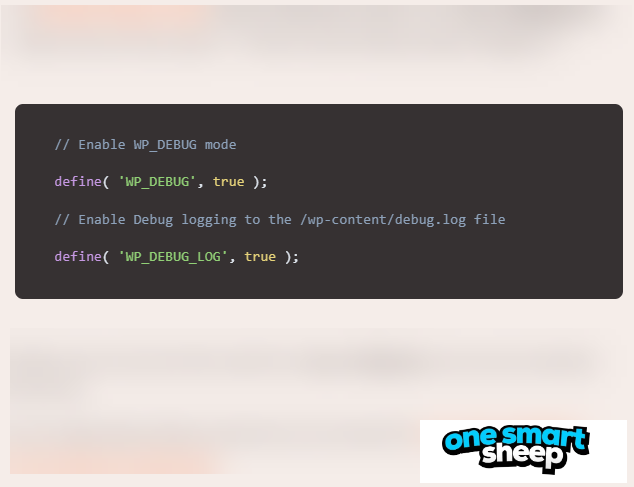
Some managed WordPress hosts equip alternative dashboard glimpses into such churning cogs under the Sites, too.
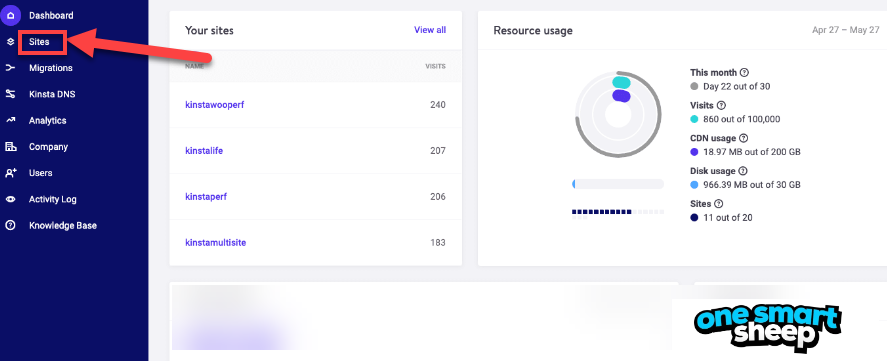
Simply name the afflicted domain and select error.log filtering to showcase priority issues actively plaguing smooth API and publishing flows.
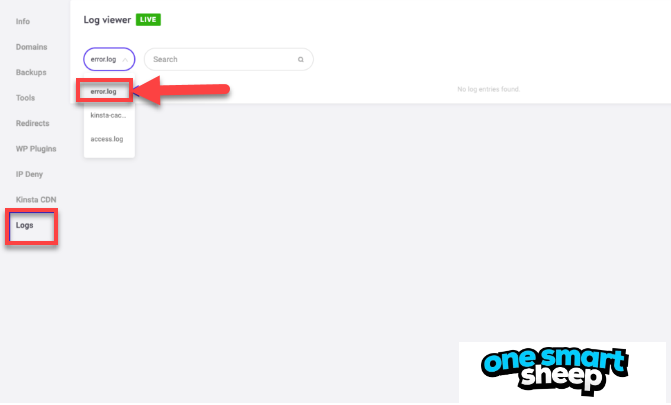
While cumbersome for prolonged use, briefly opening the debug floodgates illuminates every fault line. Hopefully, restoration demands no more than a swift configuration realignment based on uncover
Step 4: Install and Activate the Classic Editor Plugin as a Temporary Solution
If obscure publishing failures persist despite systematic troubleshooting, external support allies provide fresh vantage points.
Start by confirming hosting configurations that allow typical WordPress integration needs before assuming culpability. Managed WP providers often include REST API publishing within baseline server preparations.
Narrow plugin conflicts or firewall rule issues through vendor forums next if anomalies seem isolated from hosting environments. Leading CDN and security tools like Cloudflare actively consult and debug niche cases upon request.
Otherwise, tap into the expansive WordPress support network’s collective wisdom should all self-help hit dead ends. Veteran contributors enjoy unraveling tricky puzzles.
While awaiting definitive resolutions, fallback editor plugins like Classic Editor offer temporary content flexibility. But do prioritize addressing the root cause soon, as the Classic Editor Plugin can’t reach their potential otherwise.

Since the TinyMCE editor does not require the use of the REST API to publish or update posts, you should be able to make the necessary changes to your content with it.
With the right help steering optimization efforts, “Publishing Failed” errors stand little chance of holding your site hostage for long.
Why Updating Failed Error Occur in WordPress
- SSL Configuration Issues:
- Incorrect SSL settings, especially during the transition from HTTP to HTTPS, can lead to conflicts, causing the update process to fail.
- Database Connection Problems:
- Issues with the database connection, such as incorrect credentials or server unavailability, may prevent WordPress from saving updates to the database.
- Incorrect File Permissions:
- Insufficient file or directory permissions can hinder WordPress from writing or modifying files essential for updates.
- Plugin or Theme Conflicts:
- Incompatibility between plugins or themes and the current WordPress version can disrupt the update process. Conflicts may arise when these components interfere with each other.
- Server Resource Limitations:
- Restrictions on server resources, including memory and execution time, may result in timeouts or failures when attempting to update WordPress.
- Corrupted Core Files:
- The core files of WordPress can be damaged or corrupted for a variety of reasons, such as incomplete updates or external factors. Corrupted files can impede the smooth functioning of the update process.
- Cache or Caching Plugin Interference:
- Cached content, or conflicts with caching plugins, can lead to discrepancies between the cached version and the actual content, causing updates to fail.
- Network Issues:
- Slow or unstable network conditions can disrupt the communication between the WordPress site and the server, resulting in update failures.
- Software Version Incompatibility:
- Incompatibility between the WordPress version and server software (e.g., PHP or MySQL) can cause issues during the update process.
- Security Software Restrictions:
- Security plugins or software may impose restrictions on certain activities, including updates, to protect the website. These restrictions could lead to the "Updating Failed" error.
Wrapping Up
Resolving the "Updating Failed" error in WordPress requires a systematic 6-step approach outlined with detailed screenshots.
The guide addresses SSL misconfigurations by covering adjustments to SSL and HTTPS settings and modifications to the WordPress Address (URL) in the database and emphasizes the importance of verifying the fix.
However, SSL configuration is just one factor; other contributors include database connection problems, file permissions, plugin conflicts, server limitations, corrupted files, cache issues, network problems, software version disparities, and security software restrictions.
The FAQs section provides additional insights on SEO impact, unsuccessful resolutions, plugin conflicts, and recovery after a failed update. Seeking hosting provider support is recommended if outlined solutions prove ineffective, as they possess tools for investigation.
The blog stresses the significance of regular updates for website relevance and SEO performance, providing users with a comprehensive guide for effective troubleshooting and smooth WordPress site updating.
FAQs
Does updating Failed Error have any impact on the SEO of the website?
The 'Updating Failed' error itself does not directly impact SEO. However, if not promptly resolved, it may result in outdated content, potentially affecting user experience and search engine rankings. Regular updates are essential for maintaining a website's relevance and SEO performance.
What steps should be taken if the resolution for the "Updating Failed" error is unsuccessful?
If unable to resolve the 'Updating Failed' error, seek support from the hosting provider. They can investigate server logs and address potential misconfigurations or glitches on their end.
Can we resolve the Updating failed error by un installing all plugins?
Yes, resolving the "Updating Failed" error by uninstalling all plugins is a potential troubleshooting step. Deactivating all plugins eliminates the possibility of a plugin conflict causing the issue. After deactivation, you can systematically reactivate each plugin to identify the specific one causing the problem. This process helps isolate and address the root cause, leading to a resolution in many cases.
How do I fix my WordPress site after a plugin update goes wrong?
If a WordPress plugin update goes awry, start by deactivating the problematic plugin in the "wp-content/plugins" directory. Verify site functionality, and if issues persist, roll back or restore from a backup. Contact the plugin developer for guidance, monitor updates, and consider alternative plugins if needed. Regular backups are crucial for swift recovery and site maintenance.
How do I fix the failed to load resource error in WordPress?
To fix the "Failed to load resource" error in WordPress, check the resource URL, verify file permissions, clear browser cache, and deactivate caching plugins. Ensure the resource isn't blocked by security measures, review server configurations, and confirm the file's integrity. Reinstalling the affected plugin or theme may also help resolve the issue.
















.svg)
.svg)
.svg)

